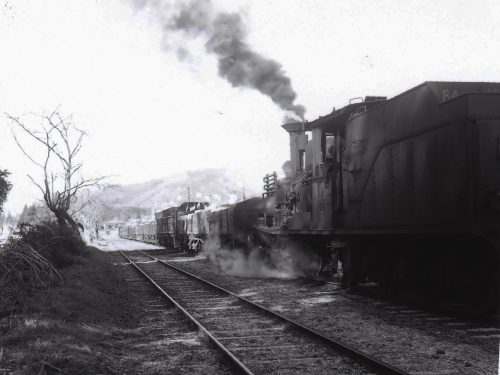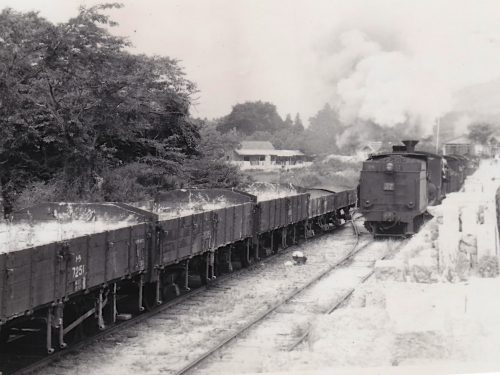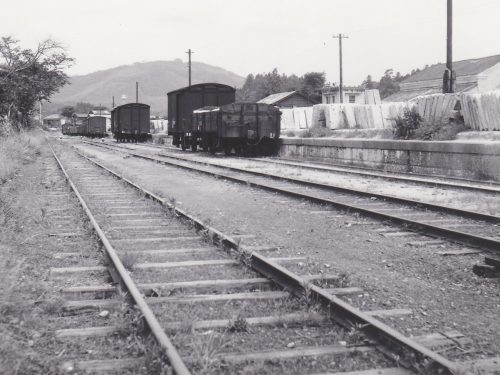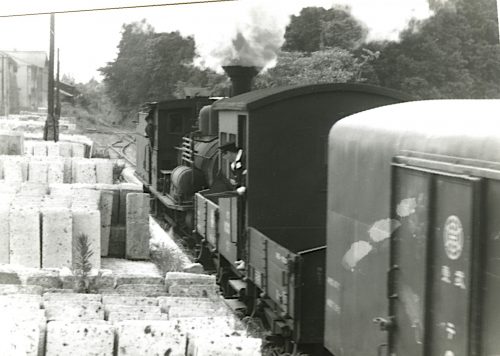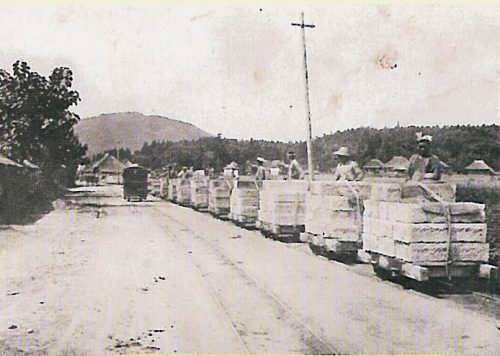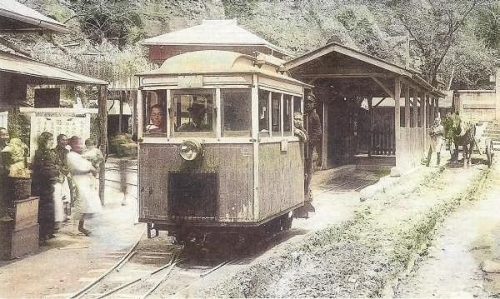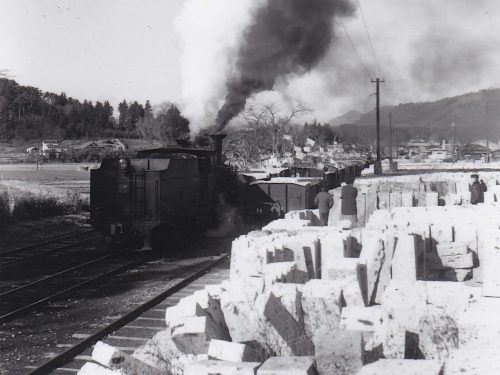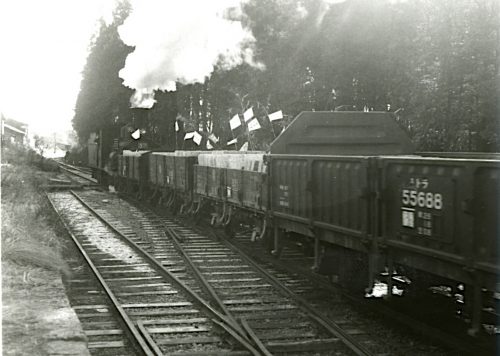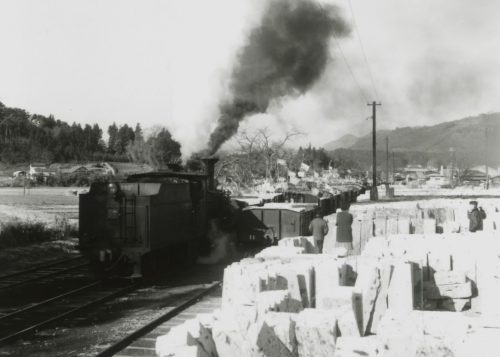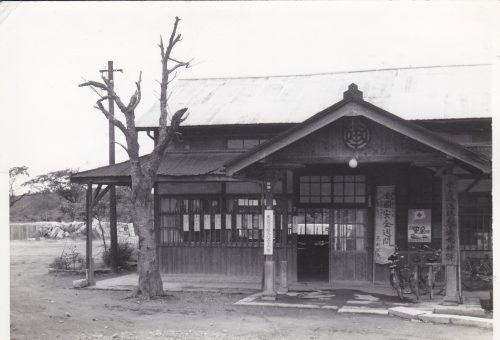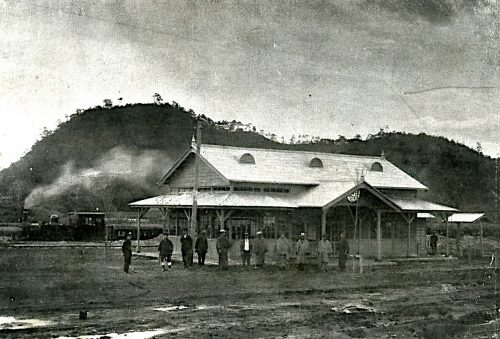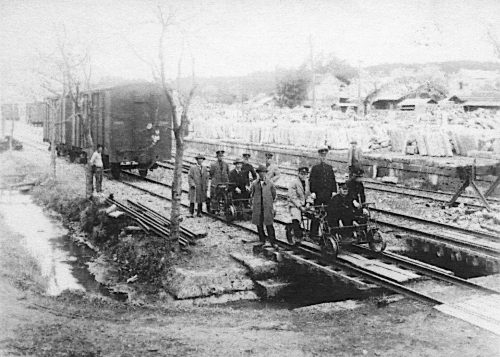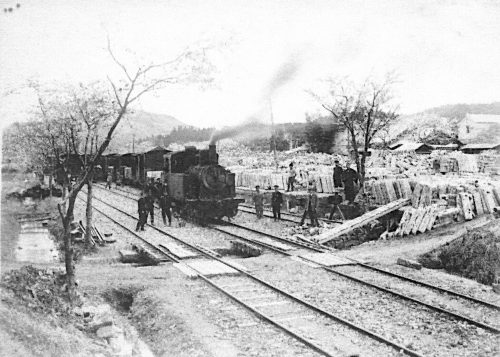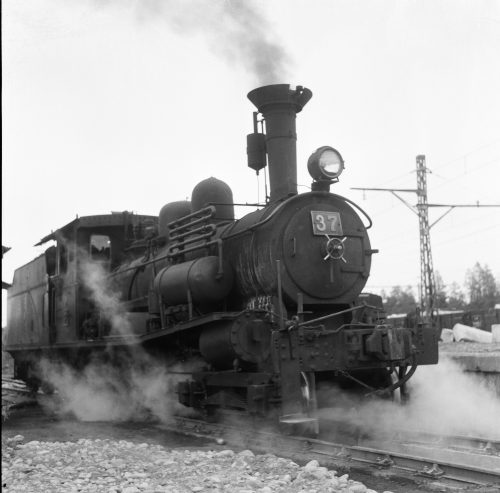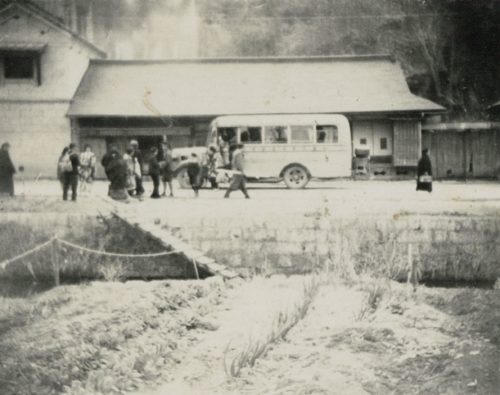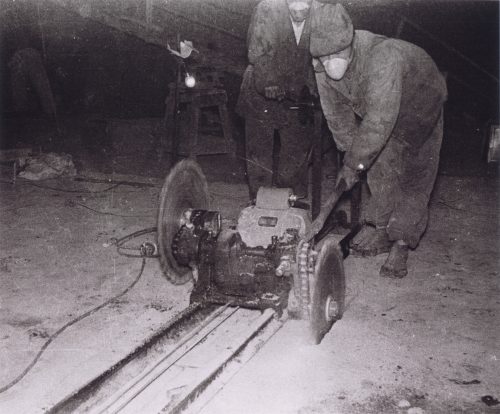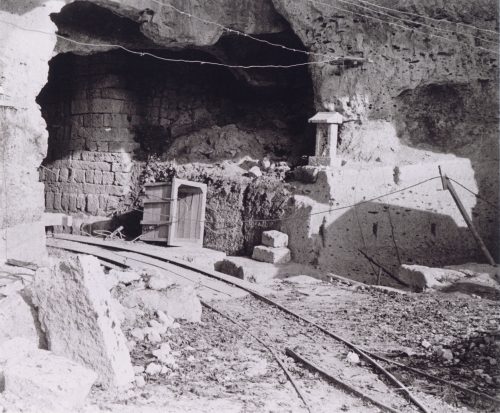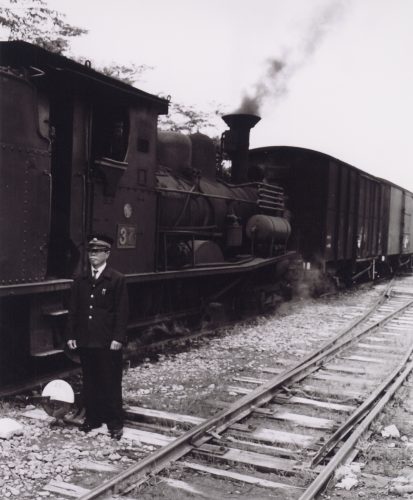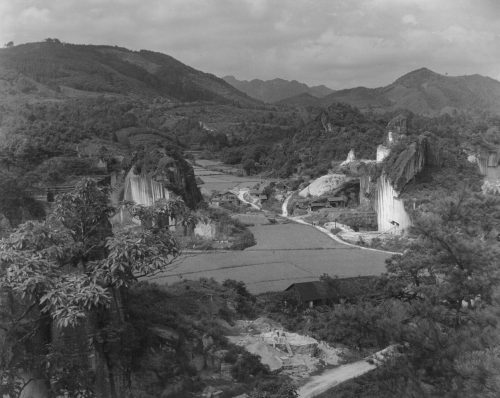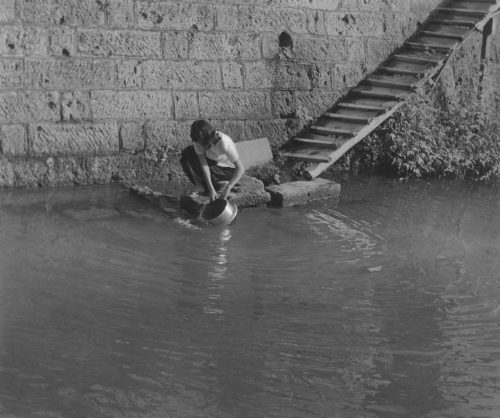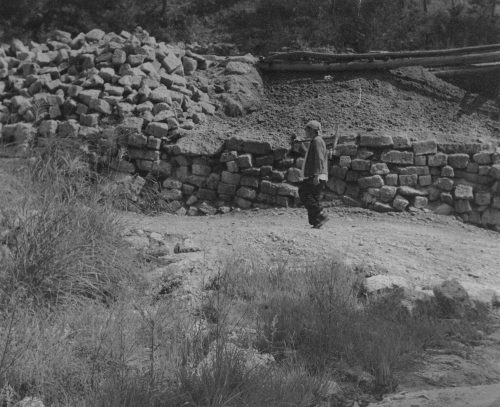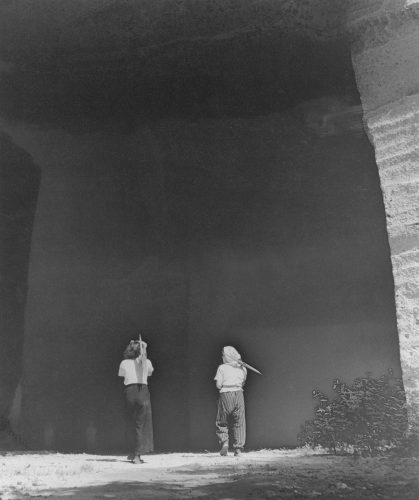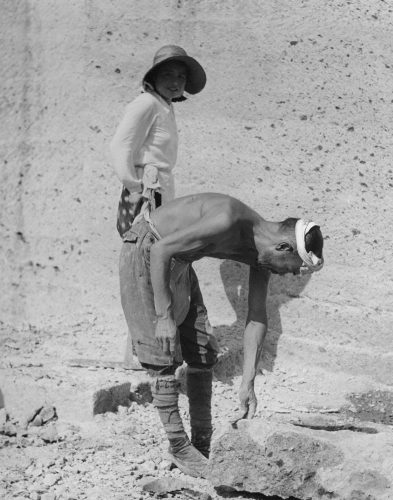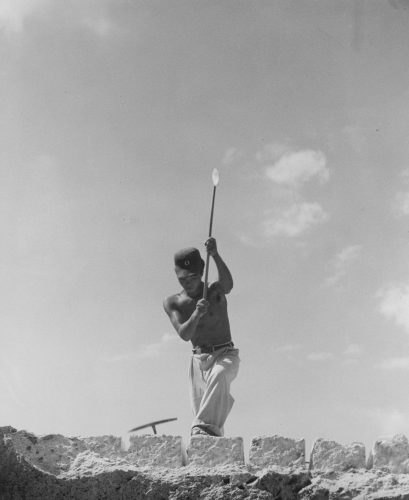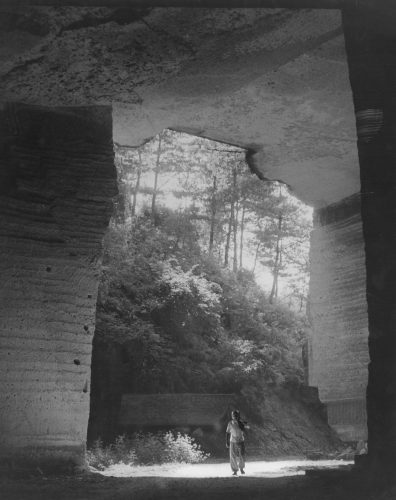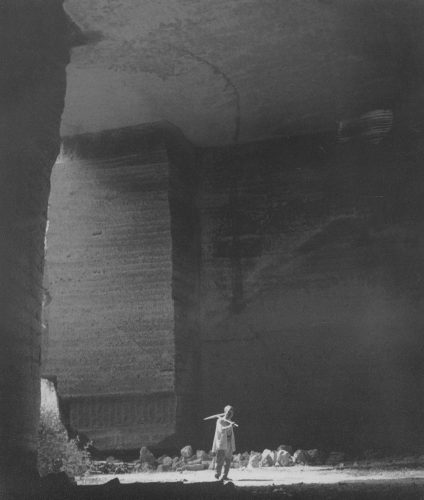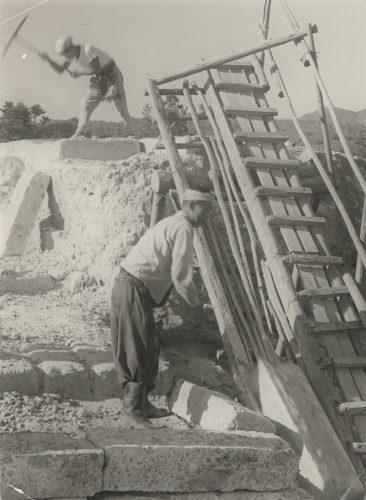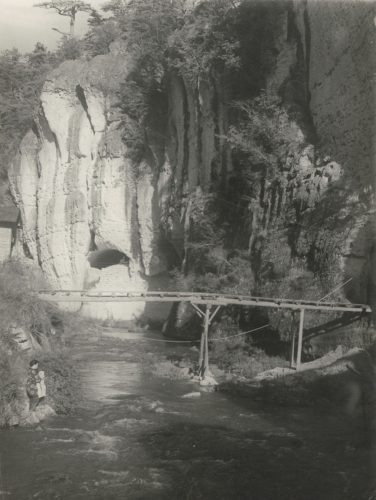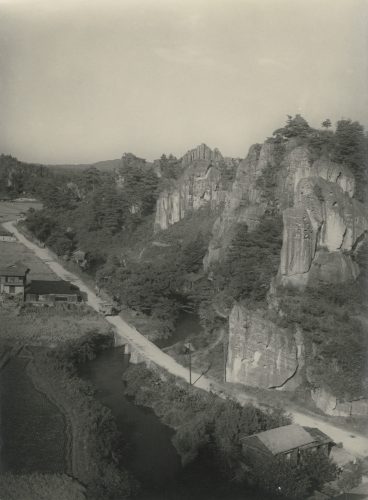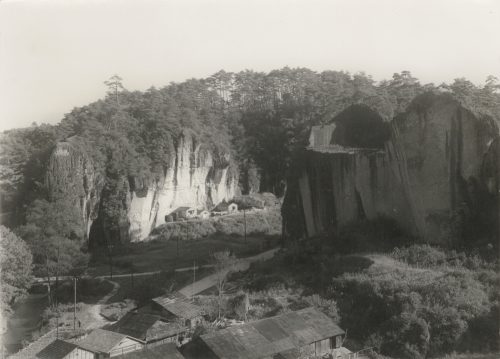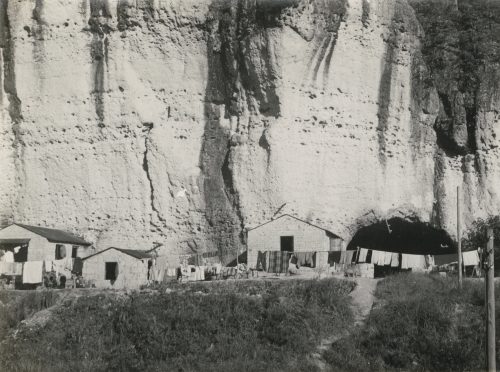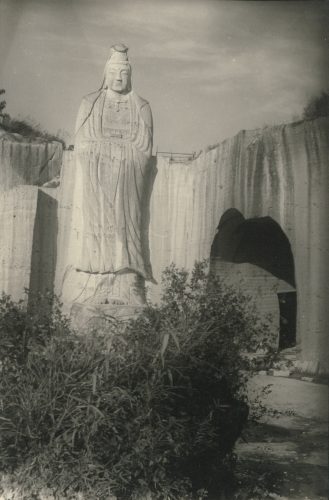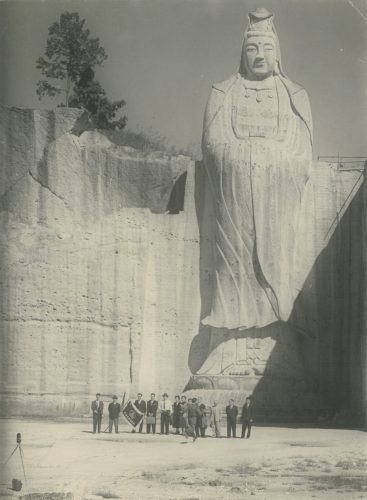ARCHIVES
0 displayed
-
-
Arahari Station
-
Arahari Station
-
Loading Oya stones at Arahari Station
-
Leaving Arahari Station
-
Passenger car is being pushed by trackmen and heading to central area of Utsunomiya passing a freight car and Oya stone waiting to being shipped
-
Utsunomiya Sekizai Kido (stone railway) Corporation, Zaimokucho Station (the current Takashima ENT Clinic) in 1907
-
The Oya Highway in the late 1800s early 1900s. Passenger car pushed by men near Ichinosawa. (Transport corps of the former Japanese army and Sakushin Gakuin can be seen)
-
The Oya Highway in the 1910s and 20s. Passenger car pushed by men near Takaragi (Tagesan Mountain in the far back, car approaching from the back)
-
A gasoline powered (passenger) train leaving Oya Branch Office in the late 1920s, early 30s
-
Leaving Arahari Station for Nishi-kawada Station (reversing)
-
Leaving Arahari Station with a flag of the first shipment of the year
-
The last “first shipment of the year” (1964)
-
Arahari Station in the mid-1950s
-
Arahari Station when it started its operation (around 1915)
-
Arahari Station in the late 1920s, early 30s and a track-cycle for railroad maintenance
-
Arahari Station in the late 1920s, early 30s and number 5 steam locomotive
-
Tobu Railway number 37 steam locomotive was made in England and imported by Nippon Railway. It was used on Tohoku Line amongst other lines and transferred to Tobu Railway in 1922. It pulled freight cars on Oya Line until 1962.
-
Tobu Railway number 37 steam locomotive was made in England and imported by Nippon Railway. It was used on Tohoku Line and other lines and transferred to Tobu Railway in 1922. It pulled freight cars on Oya Line until 1962.
-
Oya area (At the front is Sugatagawa River, shore protection with Oya stone)
-
A stone crusher for Oya stone (inside the quarry of Watanabe Stonemason’s Store)
-
A stone crusher for Oya stone (inside the quarry of Watanabe Stonemason’s Store)
-
Sakamoto-nishi, Quarry of Nakayama Stonemason’s Store
-
Tobu Arahari Station (The last train before discontinued)
-
Tobu Arahari Station (The last train before discontinued)
-
Oya area (On the far left is Tagesan Mountain)
-
Oya area (a riverbank and shore protection with Oya stone)
-
Workers at a quarry
-
Workers at a quarry
-
Workers at a quarry
-
Workers at a quarry
-
Workers at a quarry
-
A quarry
-
Workers at a quarry
-
Strip-mining of Oya stone
-
Otome Mountain, Sugatagawa River
-
Odd-shaped rocks, Sugatagwa River
-
Otome Mountain, a private house made with Oya stone
-
Otome Mountain, a private house made with Oya stone
-
Heiwa Kannon (The tunnel-like structure to the right of the statue is the approach to Oyaji Temple.)
-
Heiwa Kannon

